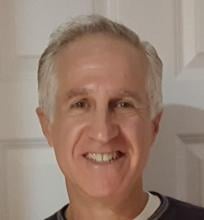Build Better Teams by Finding Hidden Talents

The fact is we’re not all created equal, and it’s counterproductive to act like that’s the case on a team. Every individual has their own unique set of strengths, and knowing what everyone’s strengths are contributes to the team’s success.
Consequently, if you’re in a position of being able to build a team, you first must determine what kind of a team you need, and then you have to find out what everyone’s specialties and strong points are, so that you can attain the right balance.
Certainly skills and knowledge are needed, but just as important is how they’re applied. Even if someone’s talents check all the boxes of technical ability, if they can’t work well with others, they’ll sabotage the team.
When you want to build a team with the right mix of both technical and soft skills, here are a few common advantageous traits to look for:
- Works well with others
- Provides constructive criticism
- Self-starter
- Takes on responsibility
- Not an excuse generator
- Not a “yes man” trying to please everyone
- Not overly optimistic, where they don’t have a plan B if plan A fails
- Not overly pessimistic, where they shoot down every suggestion or paralyze others with their own fears
So now you know what you’re looking for—but how do you know who has these strengths? It’s okay to not be aware of all the characteristics of every individual you work with; maybe you’re new to the company or project, or maybe the employee has recently joined the company or project, or maybe no one has ever bothered to find out each person’s strong suits. The important thing is that you try to find out now.
The person’s resume and past performance reviews are commonly used to identify special abilities or exceptional initiative, but there are other less obvious ways to discover talent too.
One method is an employee’s reputation. However, this does have its limitations. Individuals are usually remembered for only two things: the problems they solved and the ones they caused. Often, no one pays attention until you make a mistake, so the negative perceptions of an employee can linger for longer than the good they have done.
Another method is to ask each employee to build their own dream team of people they’d want to work with, identifying the reasons each person was selected. Employees often know each other better than managers know them, so in this exercise they’ll tend to select people by their abilities and how those abilities are applied when working with others. Compiling this information can highlight individuals whose names appear on multiple lists.
Getting together as a team is a beginning. Staying together is progress. Working together is success. And the success of each person on the team is reliant on the success of others.
Remove preconceived notions, break free from the team combinations the organization has always relied on, and take the extra effort to utilize these techniques to aid in building a better team. By knowing what each person’s strengths are, you can situate the right people in the right positions.

